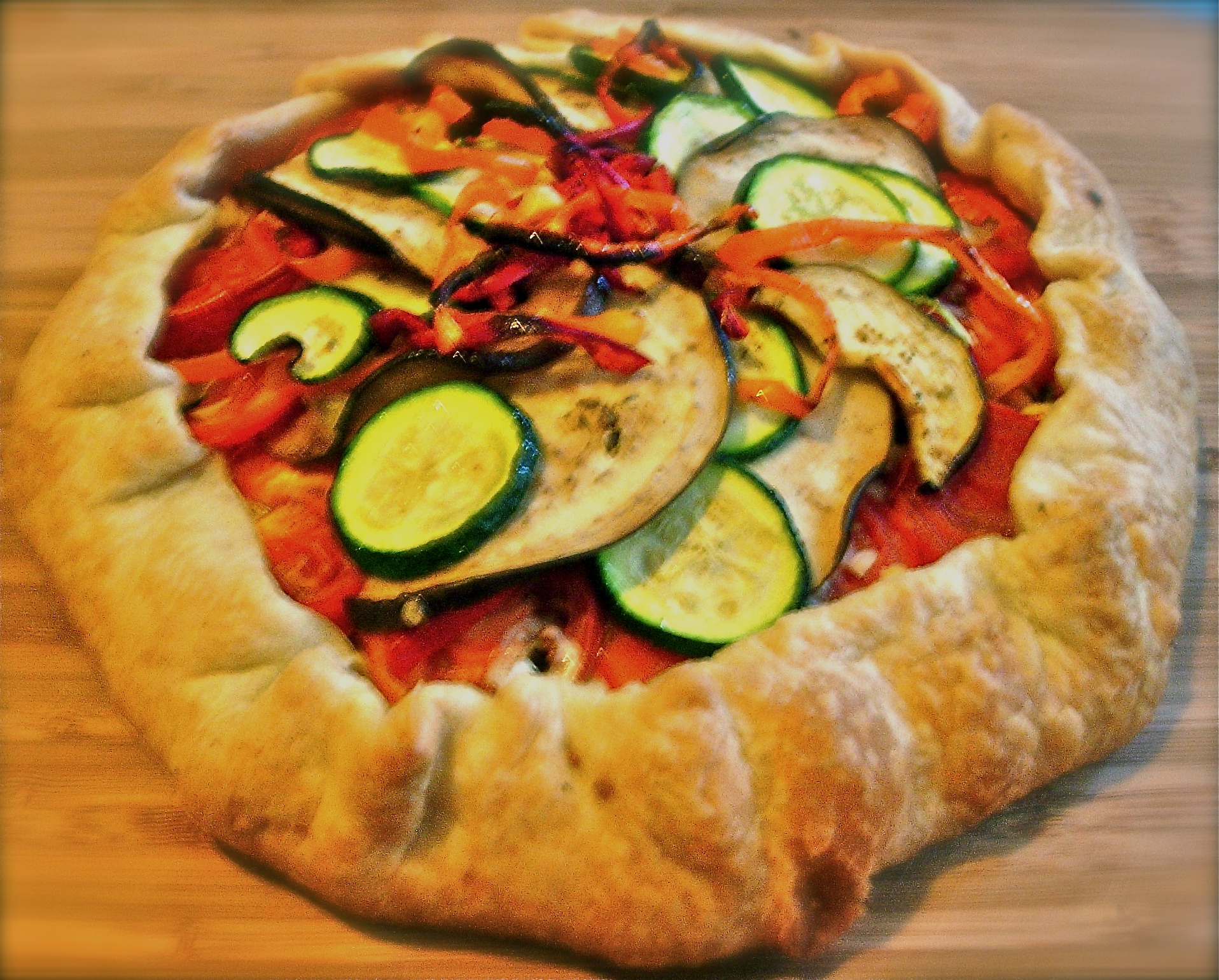
While we’ve found identifying tasty, easy, and healthy foods to be pretty challenging, figuring out what is “green” has been even more difficult. You not only have to think about the direct environmental impacts of growing the food (from pesticides, fertilizers, tractor fuel, etc.), but also the indirect impacts of transporting and selling it. You have to consider not just how green the product is, but also how green the company behind the product is. And you should also take into account the social and cultural effects of your food choices as well. Are farm workers treated well? Are small family farms supported, or only large industrial ones?
There are a myriad of issues associated with food, and good information about all of them is lacking. But we still want to do the best that we can with what is available, and so we’ve been following a few “green rules of thumb.” These rules can help guide us towards products that are more likely to be green, at least until we learn more and have better information available to us on all of the issues mentioned above.
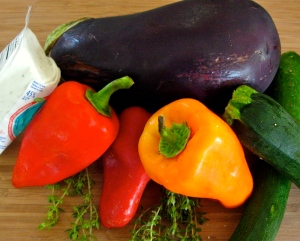
Sally and Graham’s “Green Rules of Thumb”
- On average, organic foods are more sustainable than conventional foods. Conventional foods use fertilizers that can leach into waterways and create dead zones, and pesticides that threaten both wildlife and human health.
- In general, locally-grown foods are more sustainable than foods grown further away. While of course it is possible for a local food to be grown in a highly energy intensive way, and a food grown further away to have fewer overall environmental impacts, the burden of proof rests on the distant food because its transportation footprint is very clear while its environmental performance in other parts of the life cycle are not.
- In general, independent third party certifications such as Biodynamic, Food Alliance, Rainforest Alliance, and Smithsonian Bird Friendly, indicate that a food is more likely to be produced in a more sustainable way than one that is not. It’s not guaranteed, but more likely, given that at least some effort has been made to create some transparency and accountability in the food chain.
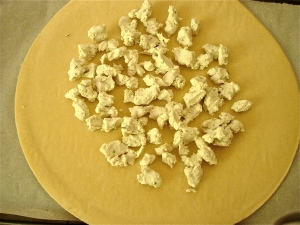
Generally we have focused on the three guidelines above, but even they can be challenging to follow. Not only do tradeoffs between them sometimes arise (non-local organic or local conventional?), but there can also be tradeoffs with our tasty, easy, and healthy criteria as well.
But who said this was going to be easy? In fact, these tradeoffs are part of the fun and part of the challenge of any modern kitchen, and they are an important part of our story that will surface frequently throughout our posts…
CSA Challenge
One of the ways that we get our organic and local produce is through a Community Supported Agriculture box or CSA box. Every other week we get a box of produce that was grown by a local farmer. The produce varies by season and sometimes includes vegetables that we’ve never cooked before. Figuring out how to prepare some of our CSA produce can be a challenge at times, but it is fun to try new things and expand our cooking repertoire. We’ll plan to share the recipes made with the produce from our CSA box in future “CSA Challenge” posts. Starting with today’s recipe…
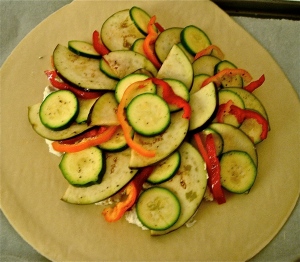
Summer Vegetable Tart
We made this tart a few weeks ago for dinner with some friends. The majority of produce we used for the tart came from our CSA box, but you could easily use different vegetables depending on the season and what you have at home. For example, I made a similar tart a while back with just tomatoes and caramelized onions. Because of time restraints I decided to use a prepared pie dough for this recipe. The crust turned out to be pretty good, but in the future we hope to make this recipe again with a homemade crust.
1 ( 9-inch) prepared pie dough
2-3 tablespoons olive oil
half of medium size eggplant
2 small bell peppers (or 1 large)
1 small zucchini
3 small tomatoes
6 oz crumbled goat cheese
2 cloves crushed garlic
2-3 sprigs fresh thyme
Preheat the oven to 400° F
If necessary, roll out or thaw dough. Line a cookie sheet with parchment paper and lay the dough flat in the center of the cookie sheet.
Slice tomatoes and zucchini into thin rounds and the eggplant and bell peppers into thin half rounds. Toss vegetables and crushed garlic in olive oil and add salt and pepper to taste.
Sprinkle crumbled goat cheese onto the dough, making sure to leave a roughly two-inch boarder from the edge of the dough. Strip thyme leaves from sprigs and sprinkle on top of goat cheese. Arrange vegetables, slightly overlapping, in concentric circles on top of the thyme and cheese mixture.
Baked in the over for 30 minutes or until crust is a nice golden brown.
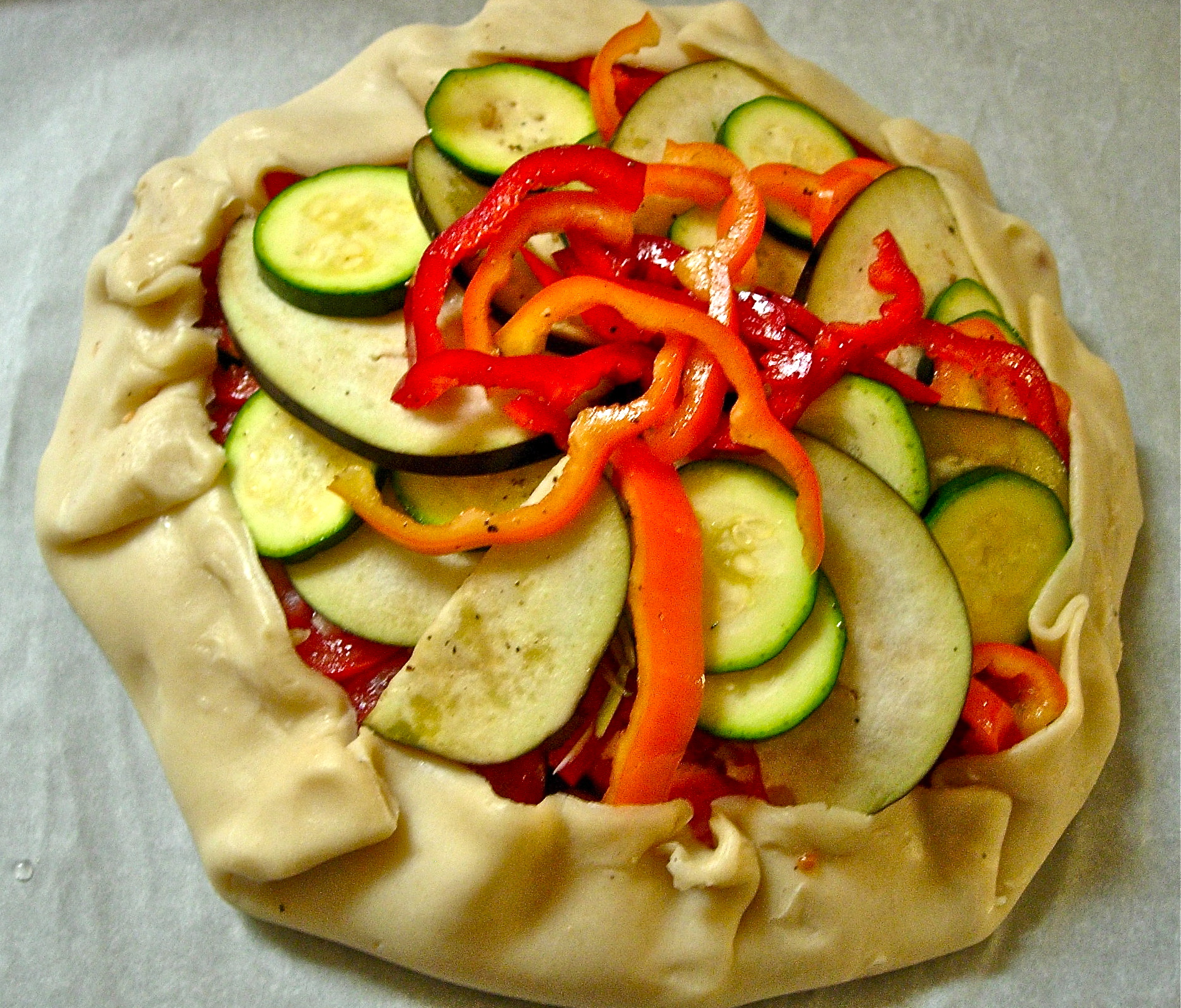

[...] crepes, but I decided to make savory crepes with veggies and basil that came in our CSA box (see What’s a “Green” Food for the definition of CSA). I also added some mozzarella cheese that we picked up at the farmers [...]
[...] has been a long time since we last had a CSA Challenge around here. As we mentioned in a previous post, one of the ways that we get our organic and local produce is through a Community Supported [...]
[...] time again for another CSA Challenge! Every other week we get a box of produce that was grown by a local farmer and sometimes our box [...]
Nice post Sally! As I was reading it I was thinking about the dilemma I face at my local cooperative grocery – organic or local? I usually end up choosing local even if it’s more expensive than the shipped in organic. Local farmers around here are really struggling so I try to support them as much as possible. Because they are small, most don’t use a lot of the nasty stuff that commercial farmers use, so I just wash well and not worry. My goal for next year is to join a CSA. There are several around here.